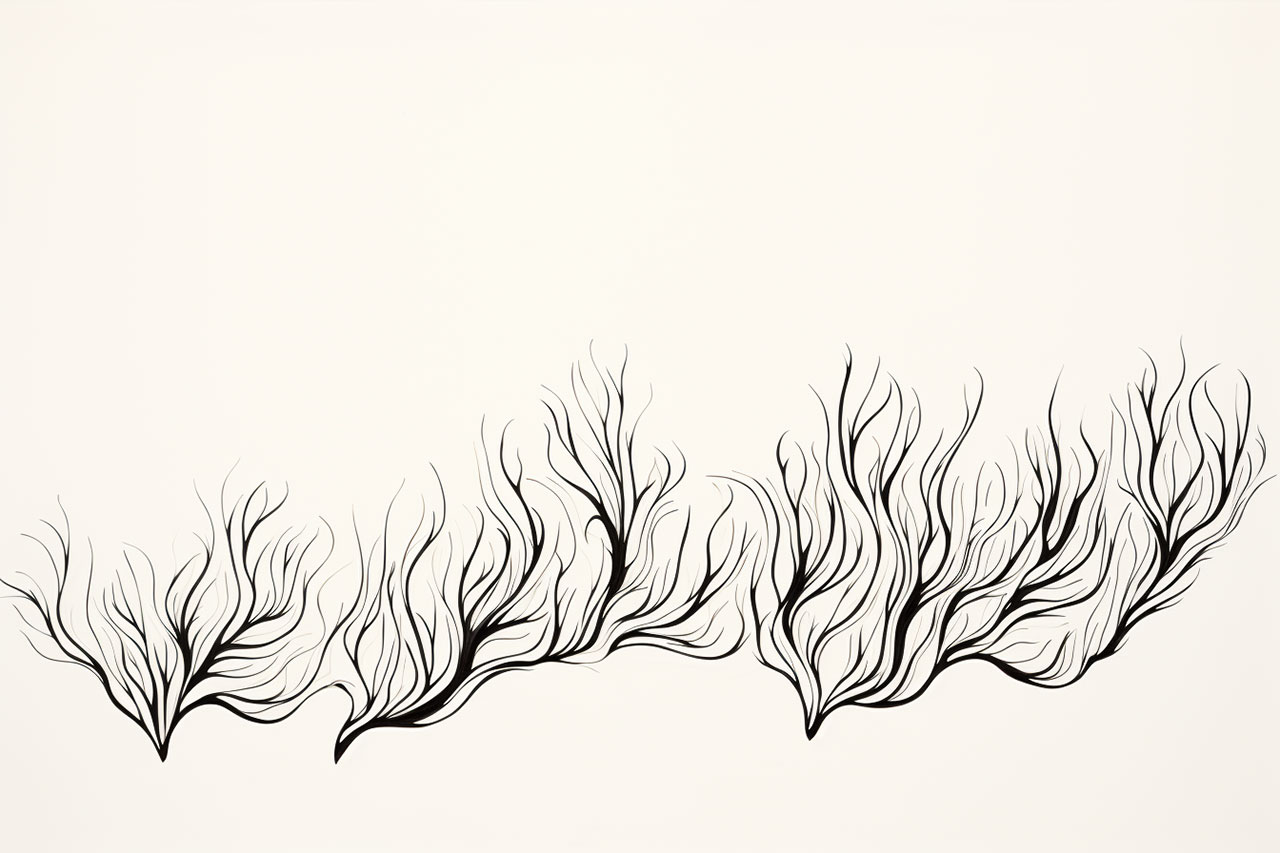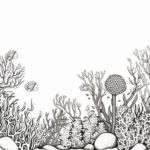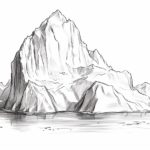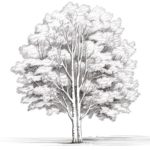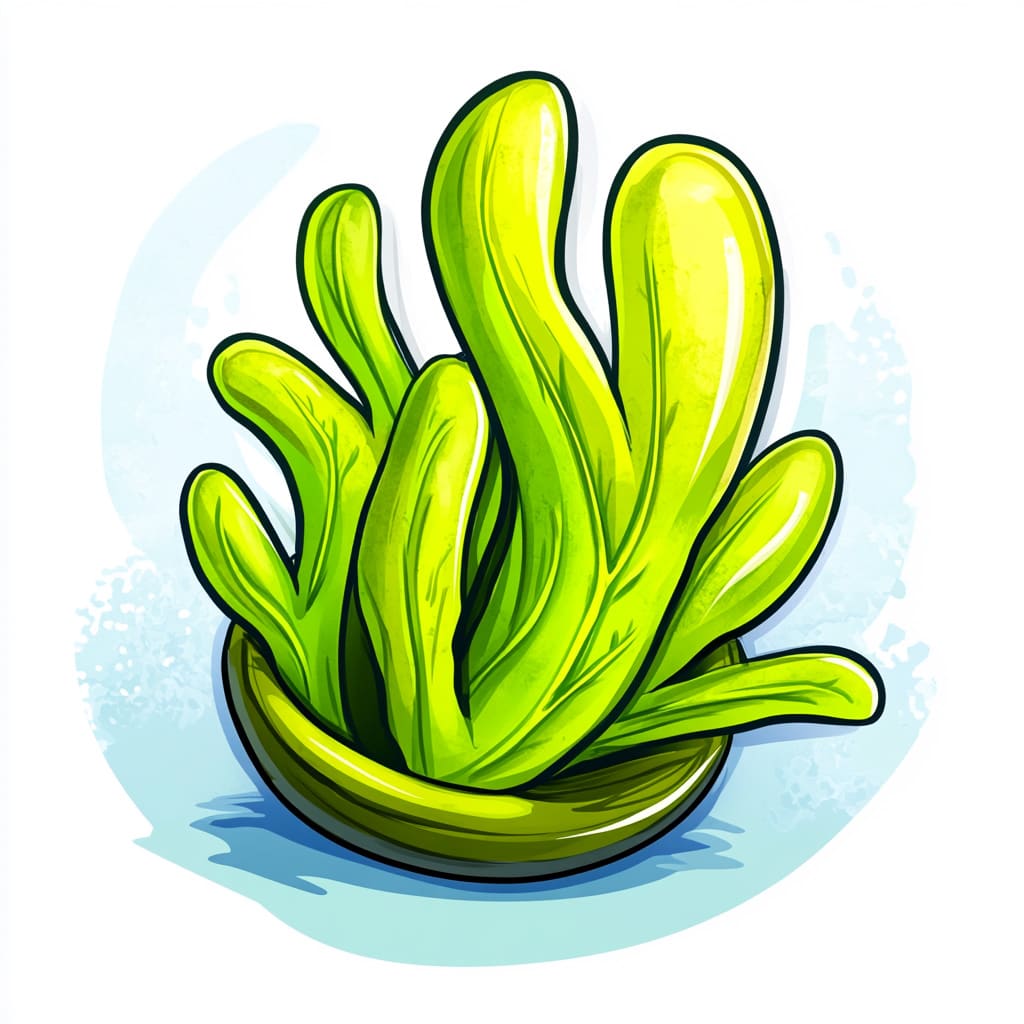
Drawing seaweed is not only an artistic endeavor but also a captivating journey into the vibrant world beneath the ocean’s surface. Whether you’re aiming for a hyper-realistic depiction or a playful, whimsical illustration, capturing the unique characteristics of seaweed can significantly enhance your underwater scenes. The diverse shapes, sizes, and colors of seaweed offer endless possibilities for creativity, making it an exciting subject to explore in your artwork.
In this step-by-step guide, we will navigate through the intricacies of how to draw seaweed, helping you to build texture and depth beneath the waves. From understanding the basic forms to adding intricate details and colors, this tutorial aims to equip you with the skills needed to breathe life into the ocean floor of your imagination. Prepare your materials and let your creativity flow as we embark on this artistic adventure!
Materials Required
Before we start, let’s gather the materials you’ll need for this drawing tutorial:
- Sketchpad or drawing paper
- Pencil (preferably an HB or 2B)
- Eraser
- Fine-tip pens or markers
- Colored pencils or watercolor paints (optional)
Now that we have everything we need, let’s dive into the wonderful world of seaweed drawing!
Step 1: Start with Basic Shapes
To begin, lightly sketch the general shape of the seaweed using simple geometric forms. Seaweed is often long and ribbon-like, so draw curved lines or loose zig-zags to represent its flowing nature. Experiment with different shapes to add variety and interest to your composition.
Step 2: Add Details and Texture
Next, add some texture to your seaweed. Seaweed strands are usually bumpy and uneven, so use short, curved lines to create a sense of depth and dimension. Vary the lengths and thickness of the lines to give your seaweed a more natural appearance.
Step 3: Refine the Shape
Take a closer look at your sketch and refine the shape of the seaweed. Smooth out any rough edges and adjust the curves to make the seaweed look more organic. Pay attention to the flow and movement of the strands as you make these adjustments.
Step 4: Enhance with Cross-Hatching
To add more depth and realism to your drawing, consider using cross-hatching techniques. Start by adding a series of parallel lines to represent the base of the seaweed. Then, layer more lines at different angles to create shading and depth. Use lighter pressure for areas that receive more light and apply heavier pressure for shadows.
Step 5: Introduce Color (optional)
If you prefer a colorful depiction of seaweed, now is the perfect time to bring out your colored pencils or watercolor paints. Choose shades of green, brown, and even red to mimic the vibrant colors of seaweed. Begin by lightly applying the colors and gradually build up layers for a more realistic effect.
Step 6: Add Seaweed Varieties
Seaweed comes in various species, each with its own distinct characteristics. Experiment with different types of seaweed, such as kelp, bladderwrack, or sargassum, to diversify your composition. Research different seaweed varieties to understand their unique shapes and textures, and incorporate them into your drawing.
Step 7: Create Depth with Overlapping
To make your drawing appear more three-dimensional, incorporate overlapping seaweed strands. Draw some strands in front of others, allowing them to intersect and overlap. This technique adds depth to your composition and creates a sense of realism.
Step 8: Finalize the Details
Take a moment to assess your drawing and add any final touches or details. Perhaps there are smaller strands of seaweed or tiny air bubbles you’d like to include. Pay attention to the overall balance and harmony of your composition, ensuring that it captures the essence of seaweed in a visually pleasing way.
Conclusion
Drawing seaweed can be a rewarding experience, allowing you to explore the hidden beauty of the underwater world. By following these step-by-step instructions, you can create realistic and captivating seaweed drawings. Remember to experiment with different shapes, textures, and colors to make your artwork unique. So, grab your sketchpad and venture into the depths of your imagination to bring seaweed to life on paper! For even more underwater fun, try drawing a sponge, squid, or even an entire coral reef.
Fun Facts About Seaweeds
- Seaweeds are not plants but a type of algae and are key players in marine ecosystems, helping produce oxygen and serving as a vital food source for marine life.
- There are thousands of species of seaweeds, categorized mainly as green, brown, or red based on their pigments and nutrient absorption.
- Some seaweeds, like kelp, can grow extremely fast—up to two feet per day in ideal conditions!
- Seaweeds have been used in food, medicine, and even as fertilizers for centuries, particularly in coastal cultures around the world.
- Nori, a type of red seaweed, is commonly used in Japanese cuisine for wrapping sushi rolls.
- Many skincare products contain extracts from seaweeds due to their rich nutrients and potential benefits for skin health.
- Seaweeds can help mitigate climate change by absorbing carbon dioxide, a major greenhouse gas.
- In some parts of the world, seaweeds are used to produce biofuel as a renewable energy source.
- Seaweeds provide habitats and protection for a myriad of marine species, offering both food and shelter in the ocean.
- The largest seaweed species is giant kelp, which can reach lengths of over 150 feet (46 meters), creating underwater forests.
Suggestions for Scenes and Settings for Seaweed Drawings
- Underwater Forest: Illustrate a lush landscape composed of towering kelp, with fish weaving through and sunlight filtering from above.
- Rocky Shoreline: Capture a scene of seaweeds clinging to rocks at low tide, with seabirds swooping down in search of dinner.
- Coral Reef Dance: Draw seaweeds swaying gracefully alongside vibrant corals, with schools of colorful fish darting in between.
- Alien Landscape: Imagine seaweeds as exotic, otherworldly plants in an underwater alien scene—maybe in vivid, surprising colors.
- Historical Seaweed Farm: Depict an ancient seaweed farm with people harvesting and drying seaweeds along a picturesque coastline.
- Ocean Floor Desert: Create a barren seafloor that is slowly being colonized by pioneering seaweeds, bringing life to the desolate scene.
- Marine Creature Playground: Show a playful gathering of dolphins, turtles, and sea otters interacting with seaweed as a natural playground.
- Seaweed Salad: Illustrate a culinary scene where chefs are preparing dishes using diverse types of seaweeds in a gourmet kitchen.
- Mythical Sea Creature: Imagine a legendary creature—like a mermaid or kraken—emerging from a wild patch of tangled seaweed.
- Environmental Poster: Design a powerful image advocating for ocean conservation, focusing on the importance of seaweeds in ecosystems.

